
Dordogne: A Journey Through Time and Nature in the Heart of France
Explore Dordogne, France: A mesmerizing blend of medieval charm, stunning natural landscapes, prehistoric wonders, and culinary delights in the heart of southwestern France.
Nestled in the heart of southwestern France, Dordogne is a region renowned for its stunning landscapes, rich history, and charming villages. As you travel through its rolling hills and lush valleys, you'll encounter medieval castles, prehistoric caves, and picturesque towns that seem frozen in time. One of the highlights of Dordogne is the ancient town of Sarlat-la-Canéda. With its beautifully preserved medieval architecture and vibrant market, Sarlat offers a delightful glimpse into the past. Wander through its narrow cobblestone streets, taste local delicacies, and soak in the atmosphere of one of France's most enchanting towns. For nature enthusiasts, the Dordogne River provides endless opportunities for outdoor activities. Whether you're kayaking along its gentle waters, hiking through the verdant countryside, or simply enjoying a leisurely picnic by the riverbank, the natural beauty of Dordogne is sure to captivate your senses. History buffs will be enthralled by the region's prehistoric sites, including the famous Lascaux Caves, which house some of the world's most remarkable Paleolithic art. The caves offer a fascinating insight into early human life and creativity, making them a must-visit for anyone interested in the dawn of civilization. Dordogne is also a food lover's paradise. The region is famous for its truffles, foie gras, and locally produced wines. Be sure to indulge in the local cuisine at one of the many charming bistros and restaurants that dot the landscape. The culinary delights of Dordogne are a testament to the region's rich agricultural heritage and dedication to quality produce.
Local tips in Dordogne
- Visit in autumn to enjoy a quieter experience and witness the stunning fall foliage.
- Book your visit to the Lascaux Caves in advance, as spots are limited and fill up quickly.
- Rent a car for the best way to explore the region and its many hidden gems.
- Don't miss the local markets, especially in Sarlat, for fresh produce and handmade crafts.
- Try to learn a few basic French phrases; locals appreciate the effort and it can enhance your experience.
Dordogne: A Journey Through Time and Nature in the Heart of France
Nestled in the heart of southwestern France, Dordogne is a region renowned for its stunning landscapes, rich history, and charming villages. As you travel through its rolling hills and lush valleys, you'll encounter medieval castles, prehistoric caves, and picturesque towns that seem frozen in time. One of the highlights of Dordogne is the ancient town of Sarlat-la-Canéda. With its beautifully preserved medieval architecture and vibrant market, Sarlat offers a delightful glimpse into the past. Wander through its narrow cobblestone streets, taste local delicacies, and soak in the atmosphere of one of France's most enchanting towns. For nature enthusiasts, the Dordogne River provides endless opportunities for outdoor activities. Whether you're kayaking along its gentle waters, hiking through the verdant countryside, or simply enjoying a leisurely picnic by the riverbank, the natural beauty of Dordogne is sure to captivate your senses. History buffs will be enthralled by the region's prehistoric sites, including the famous Lascaux Caves, which house some of the world's most remarkable Paleolithic art. The caves offer a fascinating insight into early human life and creativity, making them a must-visit for anyone interested in the dawn of civilization. Dordogne is also a food lover's paradise. The region is famous for its truffles, foie gras, and locally produced wines. Be sure to indulge in the local cuisine at one of the many charming bistros and restaurants that dot the landscape. The culinary delights of Dordogne are a testament to the region's rich agricultural heritage and dedication to quality produce.
When is the best time to go to Dordogne?
Iconic landmarks you can’t miss
Château de Beynac
Explore the breathtaking Château de Beynac, a historical castle offering stunning views and rich medieval history in the heart of France.

Castelnaud-la-Chapelle Castle
Explore Castelnaud-la-Chapelle Castle, a stunning medieval fortress in the heart of the Dordogne, rich in history and breathtaking views.

The Marqueyssac gardens
Discover the breathtaking beauty of Marqueyssac Gardens, where artful topiaries meet stunning views of the Dordogne Valley in France.

Château des Milandes
Explore the enchanting Château des Milandes, a historical castle in the Dordogne, celebrating the legacy of Joséphine Baker with stunning views and exquisite French cuisine.
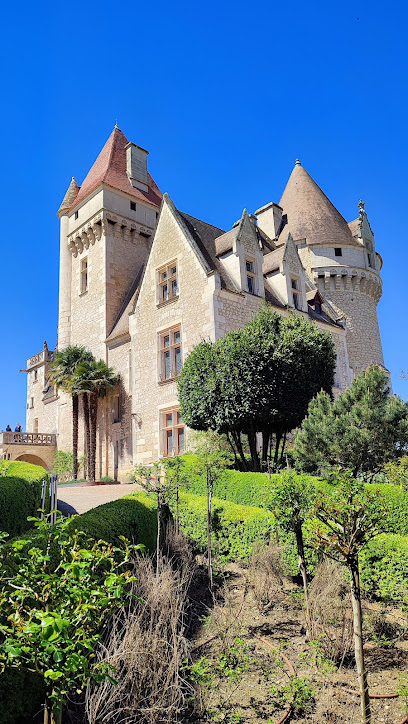
La Roque St. Christophe
Discover La Roque St. Christophe, a prehistoric marvel in France that unveils the secrets of ancient human habitation amidst stunning natural beauty.

Fortified House of Reignac
Discover the historic Fortified House of Reignac, a remarkable fortress and museum nestled in the beautiful Dordogne region of France.

The Gardens of Eyrignac Manor
Experience the serene beauty and historical charm of the Gardens of Eyrignac Manor in France, a perfect getaway for nature lovers and history enthusiasts.

Castle of Biron
Discover the rich history and stunning architecture of the Castle of Biron, a captivating tourist attraction nestled in the heart of Dordogne, France.

Périgueux Cathedral
Explore the stunning Périgueux Cathedral, a UNESCO World Heritage Site showcasing Romanesque and Byzantine architecture in the heart of France.

Commarque Castle
Explore the enchanting ruins of Commarque Castle in the Dordogne, where history meets breathtaking natural beauty.

Château de Bourdeilles
Explore the enchanting Château de Bourdeilles, a medieval masterpiece offering stunning architecture, rich history, and breathtaking views in the heart of Dordogne.

Château de Puymartin
Discover the enchanting Château de Puymartin, a stunning medieval castle in Sarlat-la-Canéda, rich in history and beauty.

Rouffignac Cave
Discover the prehistoric marvels of Rouffignac Cave, a UNESCO World Heritage site in the heart of France’s Dordogne region, rich in ancient rock art.
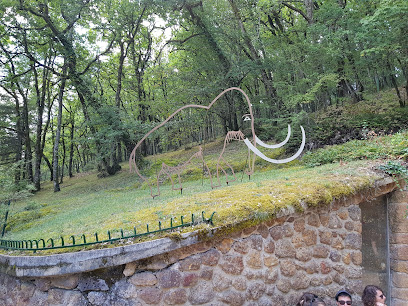
Château de Fénelon
Explore the enchanting Château de Fénelon, a historical castle in the heart of France, offering stunning architecture and rich cultural heritage.

Château et jardins de Losse
Explore the enchanting Château et Jardins de Losse, a captivating blend of history, beautiful gardens, and ecological wonders in Thonac, France.
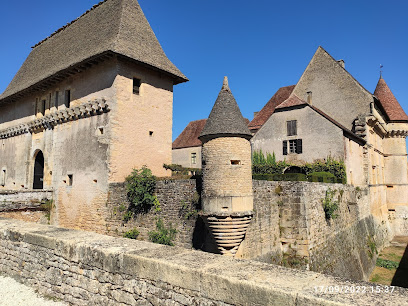
Unmissable attractions to see
Gouffre de Padirac
Explore the enchanting underground world of Gouffre de Padirac, a stunning natural wonder filled with breathtaking geological formations and an underground river.

Castelnaud-la-Chapelle Castle
Discover the stunning Castelnaud-la-Chapelle Castle, a cultural landmark in the Dordogne, showcasing medieval history and breathtaking views.

The Marqueyssac gardens
Explore Les Jardins de Marqueyssac, a breathtaking garden in Vézac offering stunning views, historical charm, and serene natural beauty.

Château des Milandes
Explore the historic Château des Milandes, a stunning castle in Dordogne, celebrated for its captivating gardens and rich connection to Josephine Baker.

La Roque St. Christophe
Discover the ancient marvels of La Roque St. Christophe, a prehistoric site that reveals the rich history of early human life in the stunning Dordogne Valley.

Brantome Abbey
Explore Brantome Abbey, a historical marvel in Périgord, where serene beauty meets rich cultural heritage.

Le Parc du Bournat | Un voyage en 1900
Discover the charm of early 1900s France at Le Parc du Bournat, a delightful theme park filled with vintage rides, artisan crafts, and lively performances.

Fortified House of Reignac
Discover the Fortified House of Reignac, a medieval marvel in Tursac that offers a unique glimpse into France's rich history and architectural beauty.
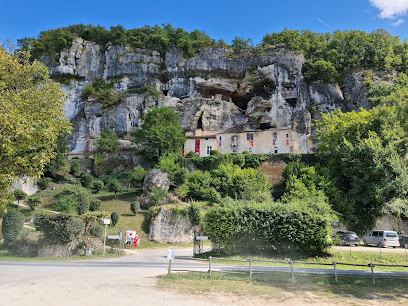
Périgord-Limousin Natural Regional Park
Explore the captivating Périgord-Limousin Natural Regional Park, where lush landscapes and rich biodiversity await every nature enthusiast.
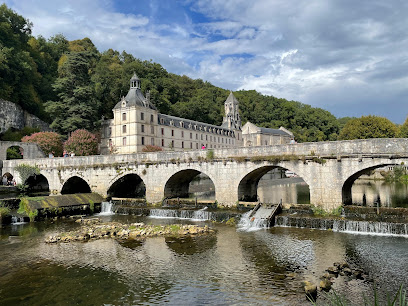
The Water Gardens of Carsac
Experience the tranquil beauty of The Water Gardens of Carsac, a breathtaking oasis in Carsac-Aillac, blending art and nature in perfect harmony.

The Gardens of Eyrignac Manor
Discover the timeless beauty and history of Eyrignac Manor's gardens, a serene escape in the heart of France, perfect for nature lovers and food enthusiasts alike.

Castle of Biron
Explore the historical charm of the Castle of Biron, a medieval gem surrounded by breathtaking landscapes, rich in culture and architectural beauty.

Périgueux Cathedral
Discover the architectural wonder and historical significance of Périgueux Cathedral, a masterpiece in the heart of France's rich cultural landscape.

National Museum of Prehistory
Explore the National Museum of Prehistory in Les Eyzies, where the ancient past meets modern understanding through captivating exhibits and artifacts.

Commarque Castle
Discover the enchanting Commarque Castle, a stunning historical landmark in Les Eyzies, offering a glimpse into medieval France amidst breathtaking scenery.

Essential places to dine
Alfred s'invite à Barnabé
Discover the unique blend of French cuisine and fun at Alfred s'invite à Barnabé, where great food meets vibrant entertainment.

La Petite Tonnelle
Savor authentic French flavors at La Petite Tonnelle in Beynac-et-Cazenac - a culinary delight amidst stunning scenery.
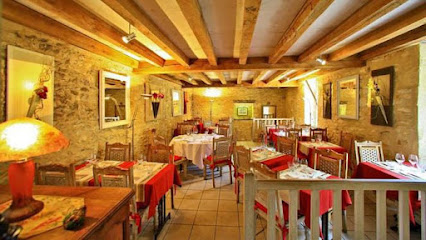
Bistro Régent
Experience authentic French cuisine at Bistro Régent in Périgueux – where every meal is a celebration of culinary tradition.

Famille Moutier
Discover the authentic taste of France at Famille Moutier in Thénac – where tradition meets culinary excellence.

Logis Auberge de la Truffe
Discover the exquisite flavors of Périgord at Logis Auberge de la Truffe - where comfort meets culinary artistry in a picturesque setting.
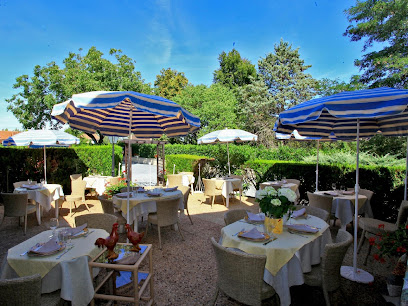
Cabanoix et Châtaigne
Experience authentic French cuisine at Cabanoix et Châtaigne in Domme—where local flavors meet culinary artistry.

Auberge de la Rode
Experience authentic French cuisine at Auberge de la Rode in Domme – where every dish tells a story.

La Maison
Savor exquisite French cuisine at La Maison in Les Eyzies – where local flavors meet culinary artistry in an unforgettable dining experience.

Relais & Châteaux - Le Vieux Logis - Dordogne
Discover luxury at Relais & Châteaux - Le Vieux Logis in Dordogne: a perfect blend of fine dining and elegant accommodations in stunning surroundings.

Le Domaine du Terroir
Experience authentic French cuisine and serene accommodations at Le Domaine du Terroir in La Chapelle-Aubareil.

Restaurant du Château
Experience authentic French cuisine at Restaurant du Château in Campagne, where every dish tells a story of tradition and flavor.

Auberge de Layotte
Experience authentic French cuisine at Auberge de Layotte in Tursac, where local flavors meet rustic charm amidst breathtaking scenery.

Trattoria Pasta e Salsa
Experience authentic Italian flavors at Trattoria Pasta e Salsa in Périgueux - where every dish tells a story.

Le Petit Léon
Discover Le Petit Léon: A culinary treasure in Saint-Léon-sur-Vézère serving modern French cuisine with exceptional service.

Le Moulin De Mitou
Experience tranquility at Le Moulin De Mitou - your perfect retreat in Auriac-du-Périgord with exquisite dining and stunning countryside views.

Markets, malls and hidden boutiques
Centre Commercial La Feuilleraie
Discover shopping, dining, and entertainment at Centre Commercial La Feuilleraie, a vibrant hub in Trélissac for tourists and locals alike.

Maisons du Monde
Explore Maisons du Monde in Boulazac Isle Manoire, the ultimate destination for unique home decor, furniture, and gifts that reflect French elegance.

CBD Shop France Périgueux
Discover the best CBD products and relaxing teas at CBD Shop France in Périgueux, a unique destination for wellness enthusiasts.

celio
Explore Celio, a top men's clothing store in Boulazac Isle Manoire, offering stylish apparel and accessories for every occasion.

Le Coin des Barons Périgueux (Omegastore)
Explore Le Coin des Barons Périgueux, a premier game store in Boulazac Isle Manoire, offering a diverse range of board games and collectibles for all ages.

Place Of Geek by POG
Explore a treasure trove of collectibles, board games, and Japanese treats at Place Of Geek, the ultimate stop for enthusiasts in Périgueux!
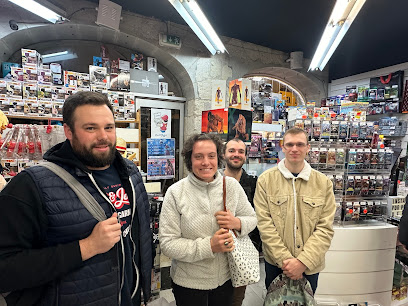
HappeSmoke - Boutique Cigarette Electronique et CBD
Explore HappeSmoke in Boulazac Isle Manoire for top-tier vaporizers and CBD products in a welcoming boutique atmosphere.

Roch et Gaston
Discover exquisite handcrafted leather goods at Roch et Gaston in Périgueux, where tradition meets elegance in every piece.

HISTOIRE DE GRAINES Périgueux / CBD SHOP
Explore Histoire de Graines, Périgueux's premier cannabis and organic shop, offering high-quality products in a welcoming atmosphere.

Stores de France
Explore Stores de France, a premier blinds shop offering stylish window coverings and exceptional service in a charming local setting.

Jeff de Bruges
Discover the exquisite world of chocolates and treats at Jeff de Bruges in Trélissac, a must-visit for confectionery lovers and gift seekers alike.

Goupil ou Face
Discover Goupil ou Face in Périgueux: a whimsical gift, game, and toy shop that captures the joy of play and gift-giving in a charming atmosphere.

By Armelle - boutique créateur
Explore the artistry of Périgueux at By Armelle, where handcrafted jewelry and bags reflect the beauty of local craftsmanship.
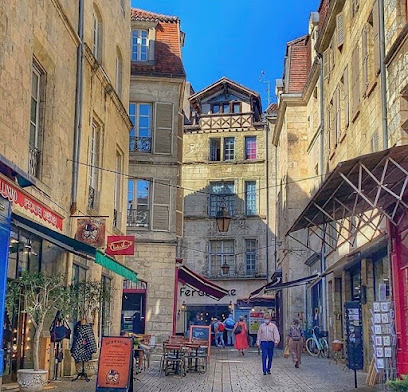
Falbalas
Explore exquisite lingerie at Falbalas in Périgueux, where quality meets elegance in a charming boutique setting.

Les Clefs Du Plaisir
Explore Les Clefs Du Plaisir, Périgueux's charming gift shop featuring unique cosmetics, lingerie, and local artisan creations for an unforgettable shopping experience.

Essential bars & hidden hideouts
Watson's Pub
Discover the vibrant atmosphere and rich flavors at Watson's Pub in Périgueux, where every meal is a celebration of local cuisine.

Le Café de la Place Périgueux
Discover Le Café de la Place Périgueux: A charming bar, restaurant, and brewery in the heart of Périgueux offering delightful local flavors and a vibrant atmosphere.
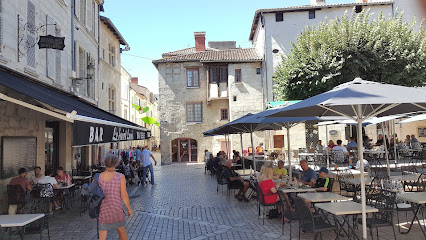
PQP - Over The Perfect
Experience the heart of Bergerac's nightlife at PQP - Over The Perfect, a bar offering a vibrant atmosphere and an array of delightful drinks.

La Taverne
Discover the charm of La Taverne in Saint-Cyprien, where authentic French cuisine meets a warm, inviting atmosphere, perfect for travelers.

Heilan Coo
Discover Heilan Coo: a vibrant pub in Périgueux, where craft beers and delicious burgers come together in a lively atmosphere for unforgettable nights.

Bar du Midi
Discover the heart of Ribérac at Bar du Midi, where delightful drinks and local cuisine come together in a cozy atmosphere.

BAM Brasserie Artisanale
BAM Brasserie Artisanale: A delightful brewpub in Périgueux offering artisanal beers and exquisite local cuisine in a charming atmosphere.

The Silver Owl
Discover The Silver Owl in Périgueux, a cocktail bar and restaurant offering exquisite tapas and creative drinks in a vibrant atmosphere.

Le Petit caviste by le Tib'
Explore fine wines and delightful pairings at Le Petit Caviste by Le Tib' in the heart of Périgueux, an essential stop for wine lovers.
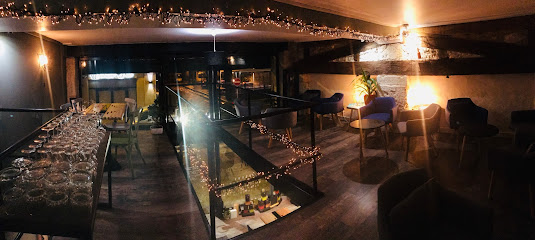
Le Comptoir De Jess
Experience the vibrant ambiance of Le Comptoir De Jess, a top bar in Bergerac, offering delightful drinks and a taste of local culture.

Le QG
Discover the vibrant social scene at Le QG, a popular bar in Périgueux offering a delightful selection of drinks and local charm.
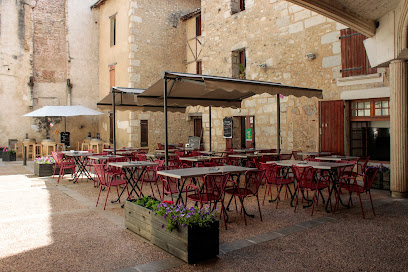
La Clarté du Vin - bar à vin
Discover the best wine and tapas in Périgueux at La Clarté du Vin, your go-to wine bar for an unforgettable tasting experience.

Bar & Restaurant Ludik Factory
Discover the perfect blend of dining and entertainment at Bar & Restaurant Ludik Factory, a must-visit destination in Bergerac, France.

Le 4YM
Discover the vibrant nightlife of Périgueux at Le 4YM, a cozy bar offering an extensive drink menu and a warm atmosphere for relaxation and fun.

CHEZ MONIQUE
Discover the vibrant atmosphere and exquisite drinks at Chez Monique, the must-visit bar in Périgueux for a taste of local culture.

Local Phrases about Dordogne
-
- HelloBonjour
[bon-zhoor] - GoodbyeAu revoir
[oh ruh-vwahr] - YesOui
[wee] - NoNon
[nohn] - Please/You're welcomeS'il vous plaît/De rien
[seel voo pleh/duh ryen] - Thank youMerci
[mehr-see] - Excuse me/SorryExcusez-moi/Désolé
[ex-kew-zay mwa/day-zoh-lay] - How are you?Comment ça va?
[ko-mohn sah vah] - Fine. And you?Bien. Et vous?
[byen. ay voo] - Do you speak English?Parlez-vous anglais?
[par-lay voo ahn-glay] - I don't understandJe ne comprends pas
[zhuh nuh kohm-prahn pah]
- HelloBonjour
-
- I'd like to see the menu, pleaseJe voudrais voir la carte, s'il vous plaît
[zhuh voo-dray vwahr lah kart, seel voo pleh] - I don't eat meatJe ne mange pas de viande
[zhuh nuh mahnj pah duh vyand] - Cheers!Santé!
[sahn-tay] - I would like to pay, pleaseJe voudrais payer, s'il vous plaît
[zhuh voo-dray pay-yay, seel voo pleh]
- I'd like to see the menu, pleaseJe voudrais voir la carte, s'il vous plaît
-
- Help!Au secours!
[oh suh-koor] - Go away!Allez-vous en!
[ah-lay voo zahn] - Call the Police!Appelez la police!
[ah-pay-lay lah poh-lees] - Call a doctor!Appelez un médecin!
[ah-pay-lay uh may-duh-sahn] - I'm lostJe suis perdu
[zhuh swee pair-doo] - I'm illJe suis malade
[zhuh swee mah-lahd]
- Help!Au secours!
-
- I'd like to buy...Je voudrais acheter...
[zhuh voo-dray zah-shtay...] - I'm just lookingJe regarde juste
[zhuh ruh-gard zhust] - How much is it?Combien ça coûte?
[kohm-byen sah koot] - That's too expensiveC'est trop cher
[say troh shair] - Can you lower the price?Pouvez-vous baisser le prix?
[poo-veh voo bay-say luh pree]
- I'd like to buy...Je voudrais acheter...
-
- What time is it?Quelle heure est-il?
[kell er ay eel] - It's one o'clockIl est une heure
[eel ay oon er] - Half past (10)Dix et demi
[dees ay duh-mee] - MorningMatin
[mah-tan] - AfternoonAprès-midi
[ah-pray mee-dee] - EveningSoir
[swahr] - YesterdayHier
[yehr] - TodayAujourd'hui
[oh-zhoor-dwee] - TomorrowDemain
[duh-mahn] - 1Un
[uhn] - 2Deux
[duh] - 3Trois
[twah] - 4Quatre
[kat] - 5Cinq
[sank] - 6Six
[sees] - 7Sept
[set] - 8Huit
[wheat] - 9Neuf
[nuhf] - 10Dix
[dees]
- What time is it?Quelle heure est-il?
-
- Where's a/the...?Où est...?
[oo ay] - What's the address?Quelle est l'adresse?
[kell ay la-dress] - Can you show me (on the map)?Pouvez-vous me montrer (sur la carte)?
[poo-veh voo muh mohn-tray (soor lah kart)] - When's the next (bus)?Quand est le prochain (bus)?
[kahn ay luh proh-shahn (boos)] - A ticket (to ....)Un billet (pour ...)
[uhn bee-yay (poor)]
- Where's a/the...?Où est...?
History of Dordogne
-
The Dordogne region is home to some of the world's most significant prehistoric art, notably the Lascaux Cave Paintings. Discovered in 1940, these Paleolithic cave paintings date back approximately 17,000 years. The intricate depictions of animals such as horses, aurochs, and deer provide a fascinating glimpse into the lives and beliefs of early humans. The cave complex, often referred to as the 'Sistine Chapel of Prehistory,' is a UNESCO World Heritage Site and represents one of humanity's earliest forays into artistic expression.
-
The Romans left a lasting imprint on the Dordogne region, particularly in the town of Périgueux, known in antiquity as Vesunna. Established around the 1st century AD, Vesunna was a significant Gallo-Roman city. Visitors can explore the Vesunna Gallo-Roman Museum, built around the remains of a grand Roman villa, and view the well-preserved Vesunna Tower. These ancient ruins provide insights into Roman urban planning, architecture, and daily life in the region.
-
Dordogne is dotted with medieval castles and fortresses, many of which played crucial roles during the Hundred Years' War between England and France (1337-1453). Notable sites include the Château de Beynac, which served as a strategic stronghold for French forces, and the Château de Castelnaud, held by the English. These imposing structures offer a vivid reminder of the region's turbulent past and the strategic importance of the Dordogne River in medieval military campaigns.
-
The Renaissance period brought architectural and cultural flourishes to the Dordogne region, exemplified by the Château de Hautefort. Originally a medieval fortress, the château was transformed into an elegant Renaissance residence in the 17th century. Set amidst meticulously manicured gardens, the château features grand halls, ornate décor, and an extensive art collection. It stands as a testament to the period's artistic and cultural achievements in the region.
-
During World War II, the Dordogne region became a hub of resistance activity against the Nazi occupation. The dense forests and rugged terrain provided ideal cover for the Maquis, groups of French Resistance fighters. The village of Oradour-sur-Glane, just north of Dordogne, is a poignant reminder of the war's brutal impact. Destroyed by the SS in 1944, it remains preserved as a memorial to the lives lost and the resilience of the local population.
Dordogne Essentials
-
Dordogne is located in southwestern France, and the nearest international airport is Bergerac Dordogne Périgord Airport (EGC). It is also accessible from Bordeaux-Mérignac Airport (BOD) and Toulouse-Blagnac Airport (TLS). From these airports, you can rent a car or take a train to reach Dordogne. The journey by car from Bordeaux takes approximately 2 hours, while from Toulouse it takes around 2.5 hours. Trains from Paris to Périgueux, the capital of Dordogne, are also available, with high-speed TGV services connecting Paris to Bordeaux, from where you can transfer to a local train.
-
Public transportation in Dordogne mainly consists of regional trains and buses. Renting a car is highly recommended for exploring the region, as many attractions are in rural areas not well-served by public transit. Bicycles are also a popular option for getting around, particularly for short distances and scenic routes. Taxis are available but can be expensive. The larger towns like Périgueux, Sarlat-la-Canéda, and Bergerac have local bus services that connect to nearby villages.
-
The official currency in France is the Euro (EUR). Credit cards are widely accepted in hotels, restaurants, and shops, but it is advisable to carry some cash, especially when visiting smaller towns and rural areas. ATMs are available in most towns, and it is a good idea to withdraw sufficient cash before heading to more remote locations.
-
Dordogne is generally a very safe destination for tourists. However, standard precautions should be taken, such as avoiding poorly lit areas at night and securing personal belongings in crowded places. There are no specific high-crime areas targeting tourists, but it is always wise to remain vigilant and aware of your surroundings.
-
In case of emergency, dial 112, the European emergency number, for immediate assistance. Local police stations and medical facilities are available throughout Dordogne. It is recommended to have travel insurance that covers medical emergencies. Pharmacies are common and can provide over-the-counter medications for minor health issues.
-
Fashion: Do dress comfortably but neatly; casual is fine, but avoid overly revealing clothing, especially in religious sites. Religion: Do respect local customs and traditions; when visiting churches, dress modestly and be quiet. Public Transport: Do be respectful and offer your seat to the elderly or those with disabilities. Don’t eat or drink on public transport. Greetings: Do greet people with 'Bonjour' and a handshake or cheek kiss, depending on the level of familiarity. Eating & Drinking: Do try local foods and wines; accepting food and drink offerings graciously is considered polite. Don’t rush meals; dining is a leisurely activity in France.
-
To experience Dordogne like a local, visit the weekly markets in towns like Sarlat-la-Canéda, Périgueux, and Bergerac, where you can buy fresh produce, cheeses, and other regional specialties. Engage with locals and try to learn a few French phrases; even basic attempts are appreciated. Don’t miss the local festivals and events, which often include traditional music, dance, and food. Explore the lesser-known medieval villages and take advantage of the many hiking and biking trails to fully appreciate the natural beauty of the region.
Trending Landmarks in Dordogne
-
Château de Beynac
-
Castelnaud-la-Chapelle Castle
-
The Marqueyssac gardens
-
Château des Milandes
-
La Roque St. Christophe
-
Fortified House of Reignac
-
The Gardens of Eyrignac Manor
-
Castle of Biron
-
Périgueux Cathedral
-
Commarque Castle
-
Château de Bourdeilles
-
Château de Puymartin
-
Rouffignac Cave
-
Château de Fénelon
-
Château et jardins de Losse
Nearby Cities to Dordogne
-
Things To Do in Bordeaux
-
Things To Do in Toulouse
-
Things To Do in La Rochelle
-
Things To Do in Lourdes
-
Things To Do in Tours
-
Things To Do in Angers
-
Things To Do in El Serrat
-
Things To Do in Ordino
-
Things To Do in Nantes
-
Things To Do in Arinsal
-
Things To Do in Canillo
-
Things To Do in Soldeu
-
Things To Do in La Massana
-
Things To Do in Encamp
-
Things To Do in San Sebastián













